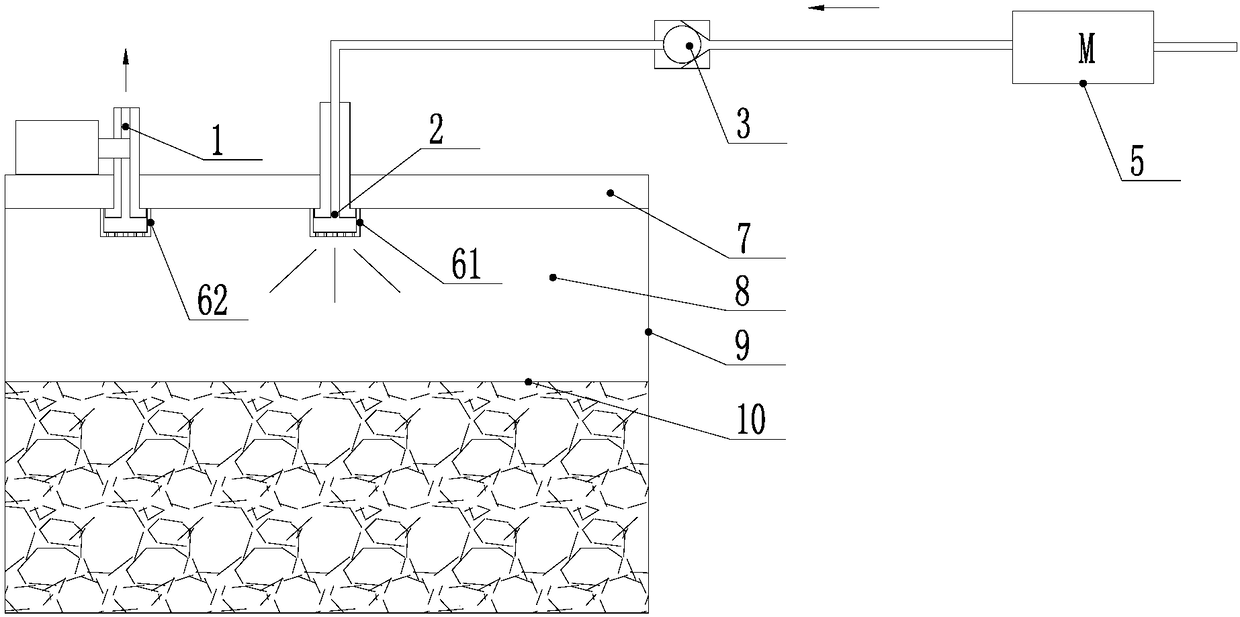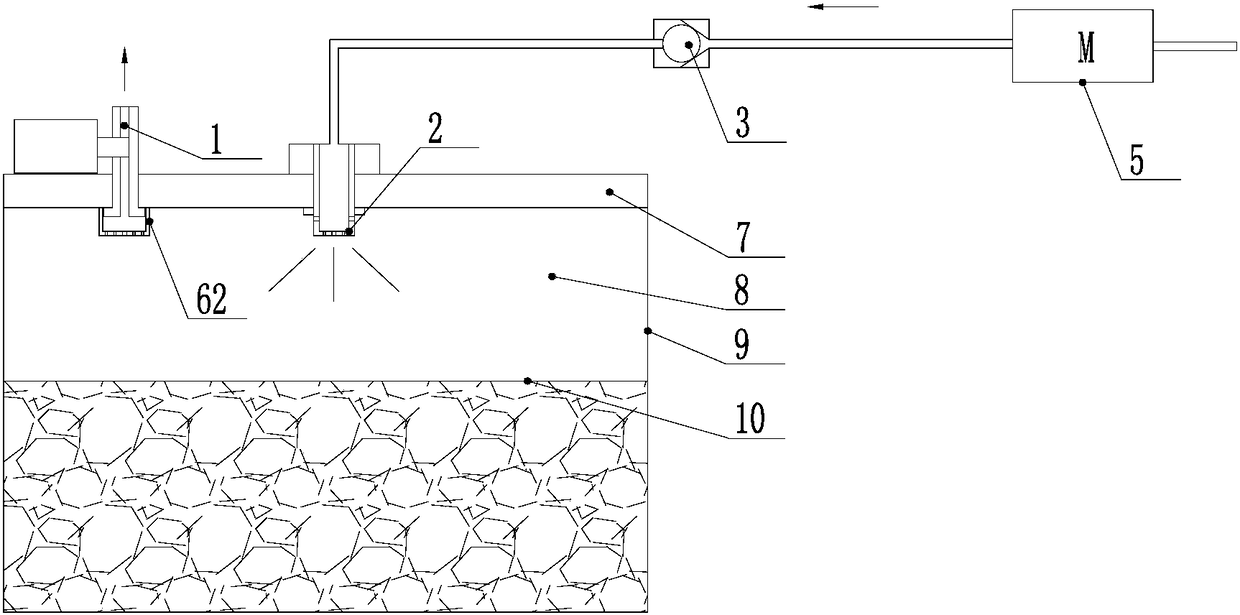Cooking utensil
A technology for cooking utensils and cooking cavities, which is applied to the lids of cooking utensils, cooking utensils, household utensils, etc., can solve the problems of long waiting time for opening the cover and long cooking time, so as to reduce the non-heating waiting time, shorten the cooking time, and speed up the Effects of the cooking process
- Summary
- Abstract
- Description
- Claims
- Application Information
AI Technical Summary
Problems solved by technology
Method used
Image
Examples
Embodiment 1
[0053] The cooking utensil of Embodiment 1 is an electric pressure cooker, figure 1 A working schematic diagram of the electric pressure cooker for quick porridge cooking is shown. The cooking utensil of Embodiment 1 includes: an inner pot 9 , a cooking cavity 8 is formed in the inner pot 9 , and ingredients 10 are accommodated in the cooking cavity 8 . The electric pressure cooker also includes an exhaust port 1, a pressure limiting valve, an air inlet 2, a one-way valve 3, an air intake channel 4, an air pump 5, a pot cover 7 and a heating device. The air inlet 2 and the exhaust outlet 1 are all arranged on the pot cover 7 . The heating device is used for heating the cooking cavity. The above pressure limiting valve is also called exhaust valve.
[0054] The air pump 5 is arranged on the air intake channel 4 to suck the air outside the cooking utensil into the cooking cavity. A pressure limiting valve is provided at the exhaust port 1, and the exhaust port 1 communicates...
Embodiment 2
[0067] The working principle of embodiment two is as follows:
[0068] When the food material 10 is cooked in the closed cooking cavity 8 composed of the pot cover 7 and the inner pot 9, and the air pump 5 adds cold air to the closed cavity through the one-way valve 3, the intake air from the air inlet 2 passes through the air intake cap. 61 disperses and sprays the intake air to the surface of the food material 10 in the inner pot 9, so that the maximum area plays a cooling role and reduces foam generation and overflow. At the same time, during the discharge and cooking process, the foam generated on the surface of the food material 10 is not easy to enter the air inlet 2 and the air outlet 1, which reduces the risk of overflow and facilitates cleaning.
[0069] Since the air intake cap 61 is provided as a guide part at the air inlet, the guide part disperses and / or changes the direction of the airflow at the air inlet, so the guide part can disperse the intake air above the ...
Embodiment 4
[0074] The cooking utensil of Embodiment 4 is also an electric pressure cooker, which is convenient for frequent disassembly and cleaning of the inner cover of the pot cover 7 . The one-way valve 3 is arranged at the communication place between the air intake channel 4 and the cooking cavity. The one-way valve 3 of the fourth embodiment is set at a detachable position of the inner cover to realize washability and prevent food materials in the inner cavity of the electric pressure cooker from entering the air intake passage 4 .
[0075] The electric pressure cooker of Embodiment 4 includes an inner pot 9 , and a cooking cavity 8 is formed in the inner pot 9 , and ingredients 10 are accommodated in the cooking cavity 8 . The electric pressure cooker also includes an exhaust port 1, an air intake port 2, a one-way valve 3, an air intake passage 4, an air pump 5, an air intake cap 61, an exhaust cap 62 and a pot cover 7. A pressure limiting valve is provided at exhaust port 1.
...
PUM
 Login to View More
Login to View More Abstract
Description
Claims
Application Information
 Login to View More
Login to View More - R&D
- Intellectual Property
- Life Sciences
- Materials
- Tech Scout
- Unparalleled Data Quality
- Higher Quality Content
- 60% Fewer Hallucinations
Browse by: Latest US Patents, China's latest patents, Technical Efficacy Thesaurus, Application Domain, Technology Topic, Popular Technical Reports.
© 2025 PatSnap. All rights reserved.Legal|Privacy policy|Modern Slavery Act Transparency Statement|Sitemap|About US| Contact US: help@patsnap.com



